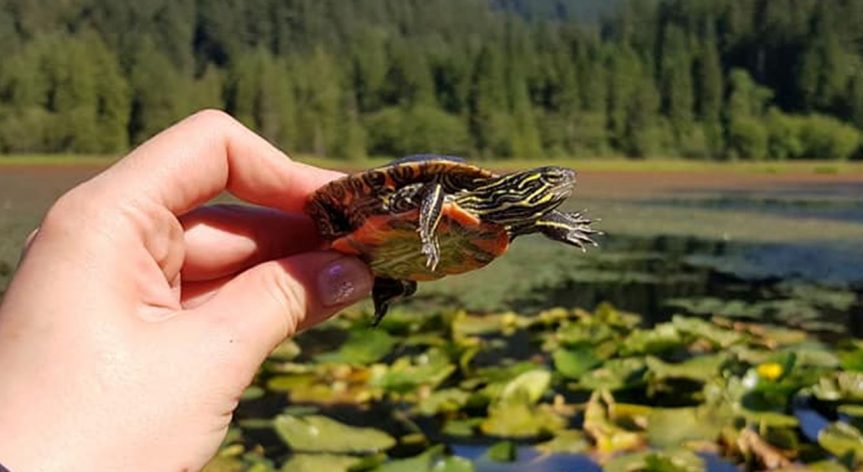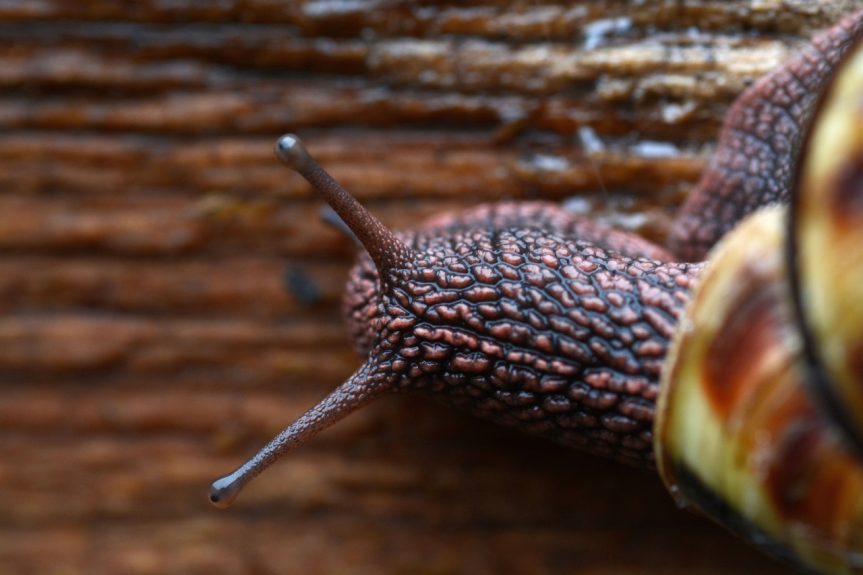
Adult Marbled Murrelet in winter plumage
– R & N Bowers/Vireo

Juvenile Marbled Murrelet on its nest platform high in an old growth Douglas-fir tree.
– T. Hamer

Marbled Murrelets have been declining throughout their range…but does habitat loss tell the whole story?
– M. Sloan

Researchers tried to relate nesting performance to diet…which meant collecting feathers…and stable isotopes from the feathers
– M. Sloan

…which means you have to catch the bird…
– M. Sloan

…which is not exactly as straightforward as it sounds…
Here’s a bird in the hand…
– M. Sloan

Researchers needed to collect stable isotopes from prey species as well. This is sampling in Desolation Sound.
– M. Sloan

By analysing the stable isotopes, various prey species could be grouped (clustered) into “high”, “low” or “mid-trophic” levels
– Janssen et al. (2009)

These, for example, are sandlance – one of the “mid trophic level” food items
– M. Sloan

The predicted relationship between feeding trophic level and breeding success was seemingly correct – in one of the sampled years!
– Janssen et al. (2009)

And the answer is, well we know some of it!
– M.Sloan
Mark Sloan – “What can stable isotopes tell us about the decline of Marbled Murrelets?”
by Andrew Bryant, 25 Jan 2018.
Mark Sloan now works as a “First Nations Relations Advisor” for the BC Government, but once upon a time he spent his days (and nights) capturing Marbled Murrelets at sea – for science!
These delightful robin-sized seabirds are noteworthy for a bunch or reasons. Most of their population is found in B.C. (although they range from Californa to Alaska), where they’re considered “threatened” or “endangered”. Most unusually, these seabirds nest in trees – specifically in big, tall trees typically associated with coastal old-growth forests.
Here in Powell River, we typically see murrelets in winter plumage, and rarely see them in their far more drab, brown breeding plumage. Indeed, for decades their breeding habits remained unknown – the first nest was only discovered in 1974 – by a maintenance worker!
Mark’s was definitely a science talk, with hypotheses, statistical tests, graphs and definitions (what is “stable isotope analysis” anyway?)
In a nutshell, what Mark’s team was trying to learn was whether breeding success of murrelets could be attributed to “how high on the food chain they were feeding”. Their full paper is available here, but be forwarned…it’s hefty reading.
What I enjoy most about such talks is that science is indeed very much like a detective story.
Sometimes the data fit one’s hypothesis, the conclusions are straightforward, and all the loose ends get neatly tied up…
…and sometimes, as in this case, they don’t!


































